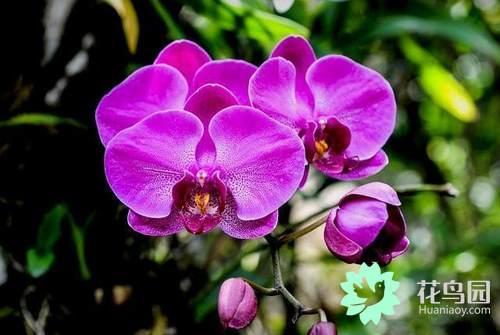Plant Evolutionary Tree: plant Genealogy for hundreds of millions of years

Human families have their own genealogies, and large plant families also have their own genealogies. The human genealogy mainly records the reproduction process of a family with blood relationship as the main body, as well as important figures and deeds, while the plant "genealogy" is an "evolutionary tree", which mainly records the various groups of the large plant family. and the relationship between them.
Know plant evolution tree what is plant evolution tree? After studying and sorting out the fossil data, combined with the structural characteristics of different plants, the scientists inferred the genetic relationship between them, and then drew a tree diagram, which is the plant evolution tree.
About 4 billion years ago, the earliest organisms appeared in the world. They were only the simplest prokaryotes such as bacteria and cyanobacteria. Some pigmented bacteria and cyanobacteria rely on sunlight to make nutrients, and then release a large amount of oxygen into the atmosphere, gradually changing the structure and properties of the atmosphere, laying a good foundation for the prosperity and development of organisms. About 1.5 billion to 1.4 billion years ago, eukaryotic organisms with eukaryotic cells appeared in the world. They are flagellates that live in water. After that, they evolved in three directions: first, the plant kingdom that can carry out photosynthesis; second, the animal kingdom that swallowed nutrients; and third, the fungus kingdom that absorbed nutrients.
In biology, plant evolution trees are used to represent the evolutionary relationships between different plants. According to the distance of the genetic relationship of all kinds of plants, biologists put them on a branched tree chart, so that people can clearly see the evolution of plants and their genetic relationship at a glance.
(plant evolution tree)
The "footprint" plants of plant evolution are called the pioneers of the world because of their unique ability of photosynthesis, which is obviously different from other organisms. Today, there are more than 500000 kinds of plants living on the earth. Where did these kinds of plants come from?
Our earth was born about 4.6 billion years ago, when it was so hot and full of poisonous gases that life could not survive. About 4 billion years ago, photosynthesis began to emerge. from prokaryotes to eukaryotes, green life gradually appeared on Earth, providing a stable source of energy for the world of life on Earth.
About 900 million to 700 million years ago, multicellular algae began to appear on the earth, and the large amount of oxygen they released blocked ultraviolet radiation and formed the ozone layer, creating favorable conditions for later plant landings. Until about 400 million years ago, a naked fern successfully landed on land, and for the next 140 million years, the earth was dominated by a variety of ferns, among which the most primitive gymnosperms and angiosperms evolved. In addition, bryophytes evolved from green algae have gradually adapted to the living environment on land. About 260 million to 136 million years ago, the dominance of ferns was gradually replaced by gymnosperms. By 100 million years ago, the earth's climate had changed, followed by several ice ages, and most gymnosperms gradually disappeared and were replaced by angiosperms, which have flourished until now.
From the "footprint" of plant evolution, we can see that their evolution is from low to high, from simple to complex, from aquatic to terrestrial. We can also divide the "footprint" of plant evolution into five processes: algae, bryophytes, ferns, gymnosperms and angiosperms.
(eukaryotes)
Do you know the first plants to "swim ashore"? 1.8 billion years ago, the earth was very different from what it is now. at that time, there was no sign of life on land, but algae appeared in the ocean. In the long years since, they have been the only green plants on earth, known as the "algal age" in the history of plant evolution.
About 600 million years ago, algae fully developed, not only floating algae, but also fixed algae in shallow waters. These fixed algae grow taller, and most of the structures are flat or branched, which can better carry out photosynthesis. Because algae in shallow waters must be subject to changes in water levels, they have gradually evolved into a new group of plants-naked ferns.
At that time, the orogeny in the northern hemisphere was very intense, the land gradually rose, many shallow sea areas became land, and most of the algae became extinct because they could not adapt to the terrestrial environment, but the naked ferns were lucky to survive in wet places. With no other competitors, they flourished like never before, and even became rulers of terrestrial plants over the next 200 million years. This period is also known by biologists as the "naked fern age".
Since the naked ferns successfully "swam ashore", the field of plant life has also expanded from the sea to the land, which is a revolutionary leap, not only entered a new geographical period, but also created good conditions for subsequent animal landings.
(naked fern)
Can modern ferns still evolve? Since the emergence of life 4 billion years ago, the environment of the earth has been constantly changing. sometimes it is unbearably hot, sometimes it is so cold that the sea turns into mulberry fields and lakes into mountains.
Under the extremely cruel natural selection, most species have been eliminated because they are unable to adapt to the changes of the environment, and only a few of them have become adaptable due to the continuous changes in body structure and become a small number of "survivors". So why did ferns, which appeared in ancient times, survive to this day? Can modern ferns still evolve?
In fact, in the long process of evolution, low-level creatures will not disappear completely, nor will they evolve to a more complex level. Because of this, there are complex angiosperms and simple unicellular algae in the world today. It must be pointed out here that the evolution of organisms is irreversible and some evolved plants cannot return to their ancestral form. Although modern pteridophytes belong to the same group as those of hundreds of millions of years ago, their structures and organs are not what they used to be, and their natural conditions are no longer what they were when seed plants appeared. Modern pteridophytes can no longer evolve into seed plants.
(modern ferns)
- Prev

The flowers are interesting and the flowering period is long. These flowers are really nice.
When it comes to flowers, we inadvertently reveal a lot of our own flower-growing experience, all kinds of flowers have their own unique characteristics, all kinds of flowers can make interesting gestures, different flowers also have different florescence, it is the difference of these flowers.
- Next

Don't buy the wrong four varieties of longan to teach you the difference between them
Longan stone is a rare fruit in southern China. The fruit is rich in nutrients. It can improve human health and improve disease resistance. It has the effect of tonifying the heart and spleen, nourishing blood and calming the nerves. Moreover, it also has the effect of anti-aging, especially for the elderly and women.
Related
- Wuhan Hospital Iron Tree Blooming Result Was Instantly Frightened by the Gardener Master
- Which variety of camellia is the most fragrant and best? Which one do you like best?
- What is the small blue coat, the breeding methods and matters needing attention of the succulent plant
- Dormancy time and maintenance management of succulent plants during dormancy
- Minas succulent how to raise, Minas succulent plant pictures
- What are the varieties of winter succulent plants
- How to raise succulent plants in twelve rolls? let's take a look at some experience of breeding twelve rolls.
- Attention should be paid to water control for succulent plants during dormant period (winter and summer)
- Watering experience of twelve rolls of succulent plants
- Techniques for fertilizing succulent plants. An article will let you know how to fertilize succulent plants.

